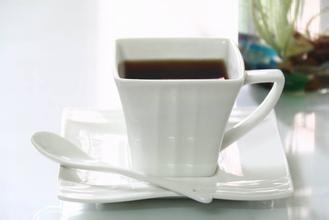Introduction to video tutorials on how to make foam with coffee machine
Introduction to video tutorials on how to make foam with coffee machine
Every time I communicate with my friends on this subject, I only get some very general results. For example: be delicate (what is delicacy? No one can explain it in precise words), like velvet (what is velvet? As a protected animal in the country, how many people dare to beat a swan to touch its velvet?) and have a slippery mouth (Oh, this is also funny, because milk is the most slippery, just like this guy is lazy and has nothing left in your mouth.), there are numerous such extremely vague adjectives. But there is a saying, which I agree with, to share with you: the surface should be reflective. I think this statement is very objective and direct, at least it can be used as a standard to be seen by the naked eye.
The main reason for saying so much here is to give you a standard that can be touched by the hand, seen by the eye and heard by the ear. Once this standard is mastered, we will discuss the comprehensive impression formed in the mouth through the oral mucosa, taste buds and through the internal nostrils of the palate, that is, the question of taste.
So what are these standards? The surface should be able to reflect light first.
The second criterion is that there is no coarse foam on the surface. This requires a lot of foam control ability, of course, this is also the premise of reflection. So what is a coarse bubble? If we have to give it a definition, I think anything larger than the diameter 1mm is called coarse foam.
The third standard is: in the case of the same amount of milk (all added to the position at the bottom of the cylinder mouth), regardless of whether it is 60% full or 70%, 80%, 90% or full, the temperature should be the same, and the number of milk bubbles cannot be adjusted by the temperature.
The fourth standard is to make two cups of cappuccino, using the WBC standard cup. After the foam is poured into the cup, there is no drop left in the jar. If this standard is sublimated a little bit, it will become: just hit as many milk bubbles as you want (except for micro-bubbles such as macchiato), which is very difficult to practice and takes a long time, and the author can only do it occasionally.
According to the above four standards, in terms of vision, feel and technology, at least it is a good jar of milk foam. I also mentioned a sense of hearing, which depends on the milk, just beat the milk foam, must not hear a very continuous burst sound, which can ensure the persistence of the milk foam in the cup. A topic about cappuccino is about the classification of cappuccino. Cappuccino can be classified according to the quality of milk foam, divided into three categories, one is wet cappuccino, one is dry cappuccino, and the other is half cappuccino in between. So how do we distinguish between these three kinds of cappuccino? If the foam technology passes, you can use the quality of the foam to distinguish as follows: premise: 600ml (medium) pull the flower jar around, and fill the milk at the bottom of the nozzle.
1, wet cappuccino milk foam is 6%, 7% full; (this milk bubble to make leaves and other lines require more pattern is very good-looking, at the same time, this foam can also be used to do latte) 2, dry cappuccino milk foam is full; 3, half cappuccino milk foam is 80% full; I prefer 90% milk foam. This foam is great for heart, apple and tulip patterns. In fact, what we usually use most is this kind of milk foam, which is used to make the cappuccino that is common in our daily work. Tip: practice now. I want to hit a jar full of 70% milk foam, never 90% full. Let's do it! Third, several misunderstandings of milk foam for milk foam, there are several misunderstandings that we need to understand, so that we can better understand milk foam. The first misunderstanding: the use of shaking up and down to pull the vat to remove the rough foam on the surface. This is a very good method, but many friends have a strong dependence on this method, their own milk foam did not play well, do not summarize why they did not play well, but use this means to make up for it. In the long run, there will be dependence. Here I must say that if we only rely on this square to remove the coarse foam, there is no way to improve the foam technology, nor can we practice the advanced skills of pulling flowers. The second misunderstanding: scoop off the coarse foam with a spoon. This method is what I reject most. Although some contestants use some methods in the competition, I think this is because their milk foam technology does not pass, the surface is too thick to shake off, can only scoop. For those who use similar methods to deal with milk foam, please strengthen your steam control technology in milk foam.

Important Notice :
前街咖啡 FrontStreet Coffee has moved to new addredd:
FrontStreet Coffee Address: 315,Donghua East Road,GuangZhou
Tel:020 38364473
- Prev

Introduction to Brand recommendation of semi-automatic Commercial Coffee Machine
The use of semi-automatic commercial coffee machine Brand recommends that the hot water temperature of brewing coffee is too high, resulting in the loss of oil. The steam boiler cannot provide enough pressure. Even so, exerting extra pressure to shorten the time it takes to brew coffee is still worth the effort. Just don't use steam, what should be used as a source of pressure? The further question is: how much to impose?
- Next

Introduction to the video of graphic operation of semi-automatic coffee machine
Video introduction to the use of semi-automatic coffee machine Desiderio Pavoni obtained a patent for the design of Bezzera in 1903, and he has been making this coffee machine since 1905. After that, Teresio Arduino began to produce similar coffee machines, and other producers followed suit. In the 1920s, this kind of coffee machine could be seen everywhere in Italian coffee shops.
Related
- What is the Philharmonic pressure? How to use Philharmonic pressure to make delicious coffee
- Why does a hand grinder have more fine powder than an electric grinder?
- In addition to the hot mom, what is the difference between the versions of EK43 | ditting and Mahdi ek43?
- What kind of equipment do you need to make coffee by hand? Introduction to novice starter cooking equipment tools
- Espresso needs to be ground how thick and thin scale entry Italian Coffee Machine Bean Grinder investigation and Grinding course
- How much does it cost to open a small private cafe? How much does it cost to learn coffee? How to operate it?
- The difference between the flavor characteristics of hand-brewed coffee and coffee maker is hand-brewed coffee really better than coffee maker? Can I use a coffee machine to make coffee beans by hand?
- The difference between 01 and 02 of hario v60 filter cup what is the difference between 01 and 02 filter cup opening and cooking flavor
- What's the difference between the smart cup and the French kettle? Which is better, the French kettle or the Smart Cup?
- What's the difference between a smart cup and a V60 filter cup? The difference between the taste of smart cup and hand-brewed coffee

